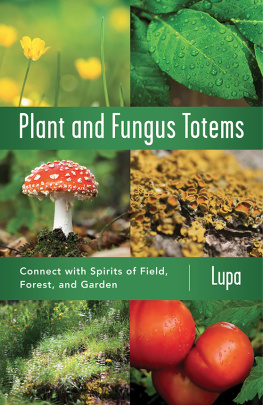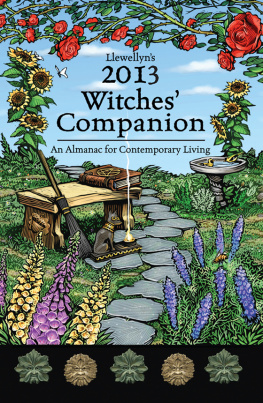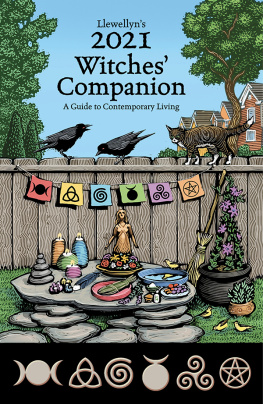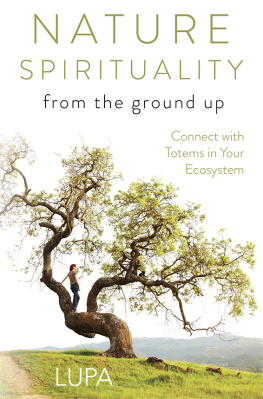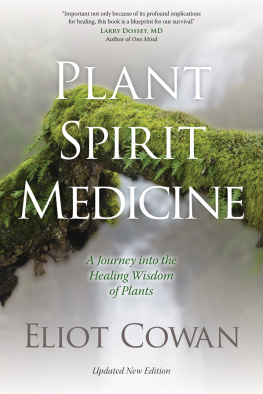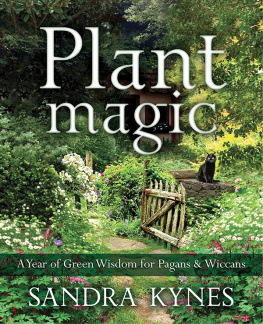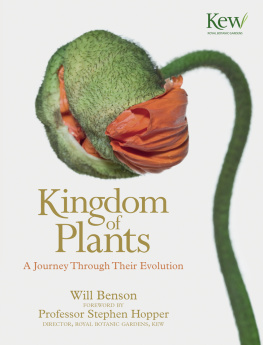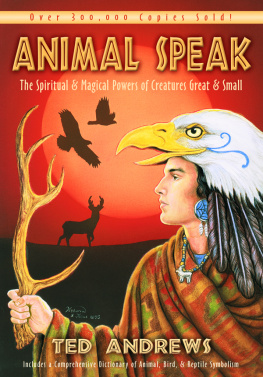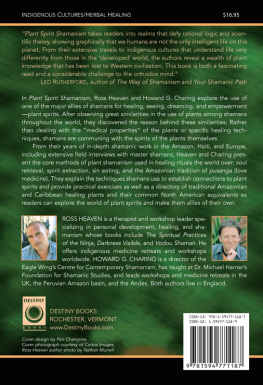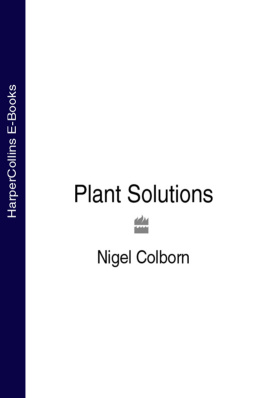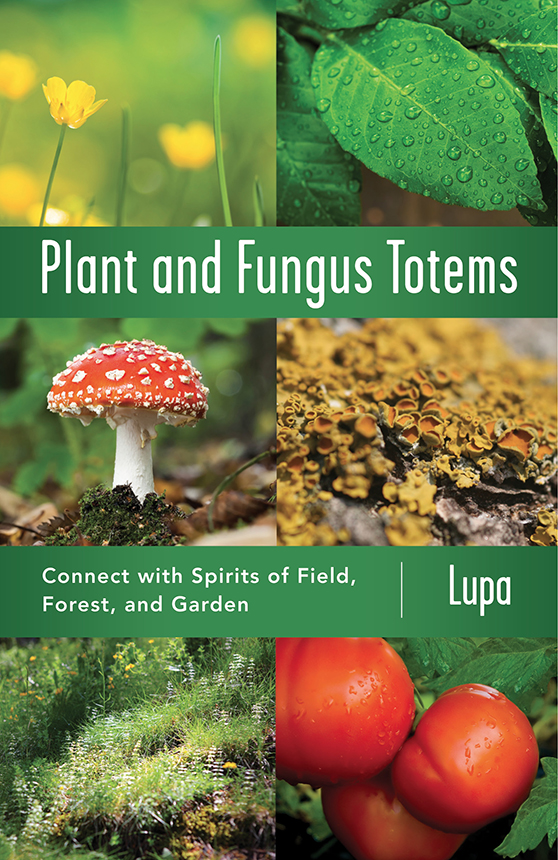Lupa is a neoshaman, artist, and sustainability geek living in Portland, Oregon. She has been working with nature-based spirituality in various forms since the mid-1990s, and while her path has wended through various experiences over the years, she has spent most of her recent time developing Therioshamanism, a self-created and spirit-directed neoshamanic path with a strong bioregional focus. She possesses a masters degree in counseling psychology with an emphasis on ecopsychology, as well as her Wilderness First Responder certification, and integrates elements of this education into her practice and writing. She has several publications on shamanism and related topics under her proverbial belt, such as 2012s New Paths to Animal Totems , and various writings all over the Internet. When not breaking keyboards with her furious typing, Lupa is most likely hiding in the Columbia River Gorge, making ritual tools and other art out of hides, bones, and other such things, and finding ways to make her apartment greener without making the rental company look askance. She may be found online at http://www.thegreenwolf.com and http://therioshamanism.com.
Llewellyn Publications
Woodbury, Minnesota
Copyright Information
Plant and Fungus Totems: Connect with Spirits of Field, Forest, and Garden 2014 by Lupa.
All rights reserved. No part of this book may be used or reproduced in any matter whatsoever, including Internet usage, without written permission from Llewellyn Publications, except in the form of brief quotations embodied in critical articles and reviews.
As the purchaser of this e-book, you are granted the non-exclusive, non-transferable right to access and read the text of this e-book on screen. The text may not be otherwise reproduced, transmitted, downloaded, or recorded on any other storage device in any form or by any means.
Any unauthorized usage of the text without express written permission of the publisher is a violation of the authors copyright and is illegal and punishable by law.
First e-book edition 2014
E-book ISBN: 9780738741079
Book design by Bob Gaul
Cover art: iStockphoto.com/16368212/Jeja
iStockphoto.com/26447776/imv
iStockphoto.com/25412165/Risto0
iStockphoto.com/3181161/anilakduygu
iStockphoto.com/4117463/portishead1
iStockphoto.com/3933690/JodiJacobson
Cover design by Kevin R. Brown
Editing by Laura Graves
Llewellyn Publications is an imprint of Llewellyn Worldwide Ltd.
Llewellyn Publications does not participate in, endorse, or have any authority or responsibility concerning private business arrangements between our authors and the public.
Any Internet references contained in this work are current at publication time, but the publisher cannot guarantee that a specific reference will continue or be maintained. Please refer to the publishers website for links to current author websites.
Llewellyn Publications
Llewellyn Worldwide Ltd.
2143 Wooddale Drive
Woodbury, MN 55125
www.llewellyn.com
Manufactured in the United States of America
This book is dedicated to all of those who helped me to connect to the land here in Oregon. To Scrub Jay and Stellers Jay, Douglas Fir and Western Hemlock, Beargrass and Sword Fern, Black Morel and Black Mold, the mighty Columbia River and Mount Hood, and all the meandering trails that led me to discovery and adventure. To all the people who work to protect this place from overzealous development, and to those displaced by such.
And to those who weave the magic of wonder
that still wends its way through the world we
live in, and share it with our fellow beings.
And to my beloved S., for teaching me greater compassion for myself and others, for being able
to reframe even the worst of my faults in a positive light, and for being more adorably hirsute
than any muse has any business being.
Contents
by Christopher Penczak
: What Are Plant and Fungus Totems?
: What Makes Plant and Fungus Totems Different from Animals?
: The Bioregional Model
: The Correspondences Model
: The Archetypal Model
: Combining the Three Models
: Leaves and CapsThe Sacred Remains of Plants and Fungi
: Giving Back to the Totems
Plant and Fungus Totem Guided Meditation
Beneficial Nonprofit Organizations
A Bit of Recommended Reading
Acknowledgments
To Elysia Gallo, for walking me through the process of making yet another book happen, and dealing with surprise deadlines with enviable grace. Thank you again to Laura Graves for once more attending to the details of proofreading and related maddening minutiae. To Christopher Penczak, for responding to my tugging on his sleeve at PantheaCon by writing a foreword of such beauty that it almost needs to have its own introduction. To the many and sundry and awesome Pagans and festival folk and fey beings in Portland and beyond who have been cheering me on as I maintain a careful balance among three and a half careers. And to you, the reader, who has chosen to give this book a try, for whatever may come of it.
[contents]
Foreword
By Christopher Penczak
Imagine someone guiding you through the dark trails gently cut through deep green forests of fir and hemlock in the Pacific Northwest. She points out the flora, fauna, and even fungi. She shows you what is edible and poisonous, and hopefully, the tracks of a four-legged friend will cross your path along the way. While shes a wellspring of knowledge involving habitat and history, she will also surprise you playfully running down the path, jumping over a log, and making some animal calls or bird noises to more deeply connect and hopefully inspire a visitoror to just have fun. And shes encouraging you to do the same. Dont just observe nature, but experience it! Dont be so serious!
Now imagine that same tour guide, taking you through a university library, pointing out the books and resources that should not be missed on your quest to understand yourself, and your connection to nature. Her choices include biology, ecology, ancient archeology, philosophy, metaphysics, and psychology, and each seems to lead effortlessly into the next, helping you forget these are all separate disciplines. She speaks about them in a way that indicates a classical education but doesnt talk over your head. Unlike those overly immersed in academia, she defines her terms along the way and speaks with a style that empowers you, rather than pointing out all that you dont know.
After the tour of the library she takes you out to a coffee shop that is decidedly not a chain, but locally owned and operated with a commitment to the environment, sustainability, and community, to tell you about her own personal experiences in the woods and with the wildlife, and to ask you about yours. She shares about herself and her own world, her experiences, friends, and students without getting lost in it. She doesnt try to re-create her own experiences for you or say they are the only way to experience, but urges you to use her stories to inspire your own.
Later she comes over dressed in her ritual regalia of fur and feathers and bones, just when you need her most, beating a drum and guiding you into a magickal space for communion with the spirits who guide you. She intuits the proper time and place, the right words to guide you, and creates a space to hold your experience and bring you deeper. She is not afraid of the unsafe places of the spirit world, but makes you aware of the dangers and responsibilities before you embark. She helps you return safely and provides a context for understanding the experience.

